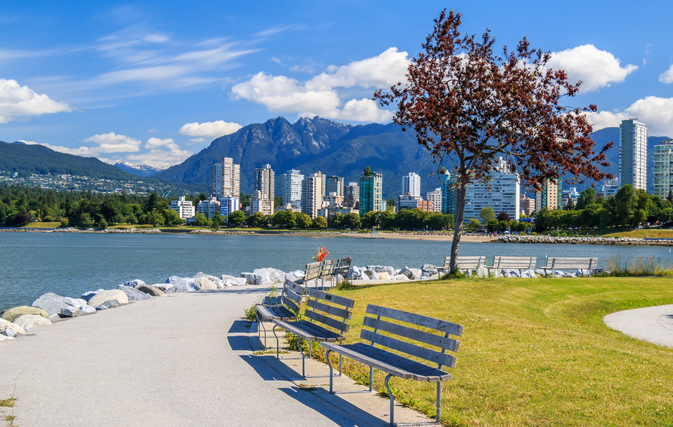VANCOUVER — English Bay offers a spectacular view, ships anchored in the water, an expansive number of beaches and a surprising amount of art.
The 14 larger-than-life laughing bronze statues, self-portraits of a renowned Chinese artist, are hard to miss even with the many other notable distractions near Vancouver’s West End residential neighbourhood.
Known as “A-maze-ing Laughter,” the statues, created by Yue Minjun, have been a favourite of locals and visitors since their arrival in 2009. The installation was originally brought in for Vancouver Biennale, a biannual public art exhibition that features sculptures, new media and performance works by celebrated and emerging international artists.
“One thing that many people do not know about is the public art offered in English Bay. ‘A-maze-ing Laughter’ has been around for a while and was so popular that it was actually purchased by Chip Wilson, who is the founder of Lululemon, for the city to keep,” said Jorden Hutchison from Tourism Vancouver.
“You have 14 bronze statues that are about three metres tall and they all weigh over 250 kilograms. That is one of the most popular areas in the city for taking a photograph at this point.”
Another popular sculpture, called “Engagement,” depicts two diamond engagement rings and stands nearly 10 metres tall. The diamonds, illuminated and tilting away from one another, are composed of translucent Plexiglas boxes and aluminum.
“They’re right on Sunset Beach. They’re very beautiful. Those are to celebrate romantic unions and were put in Vancouver to show they were celebrating gay marriage,” said Hutchison.
Then of course there are the beaches. The busiest is English Bay Beach, a favourite of sunbathers, swimmers, cyclists and joggers.
English Bay Beach hosts the annual Celebration of Light, a fireworks competition that is held for two weeks every summer, as well as the just completed Vancouver Pride Parade and Festival.
The Vancouver Seawall runs all the way around English Bay and includes Stanley Park, a 400-hectare (1,001-acre) public park that borders the downtown and is almost entirely surrounded by waters of the Pacific Ocean.
“One of the biggest draws is Stanley Park. Recently it’s been named one of the most beautiful city parks in the world by Travel and Leisure Magazine. Obviously you have the beautiful seawall, but within the actual park you have tons of forested trails,” said Hutchison.
Stanley Park has a long history and was one of the first areas to be explored in Vancouver. The land, colonized by the British during the 1858 Fraser Canyon Gold Rush, was eventually turned into Vancouver’s first park when the city incorporated in 1886. It was named after Lord Stanley, a British politician who had recently been appointed governor general.
Much of the park remains as densely forested as it was in the late 1800s, with about a half million trees, some of which stand as tall as 76 metres and are hundreds of years old.
